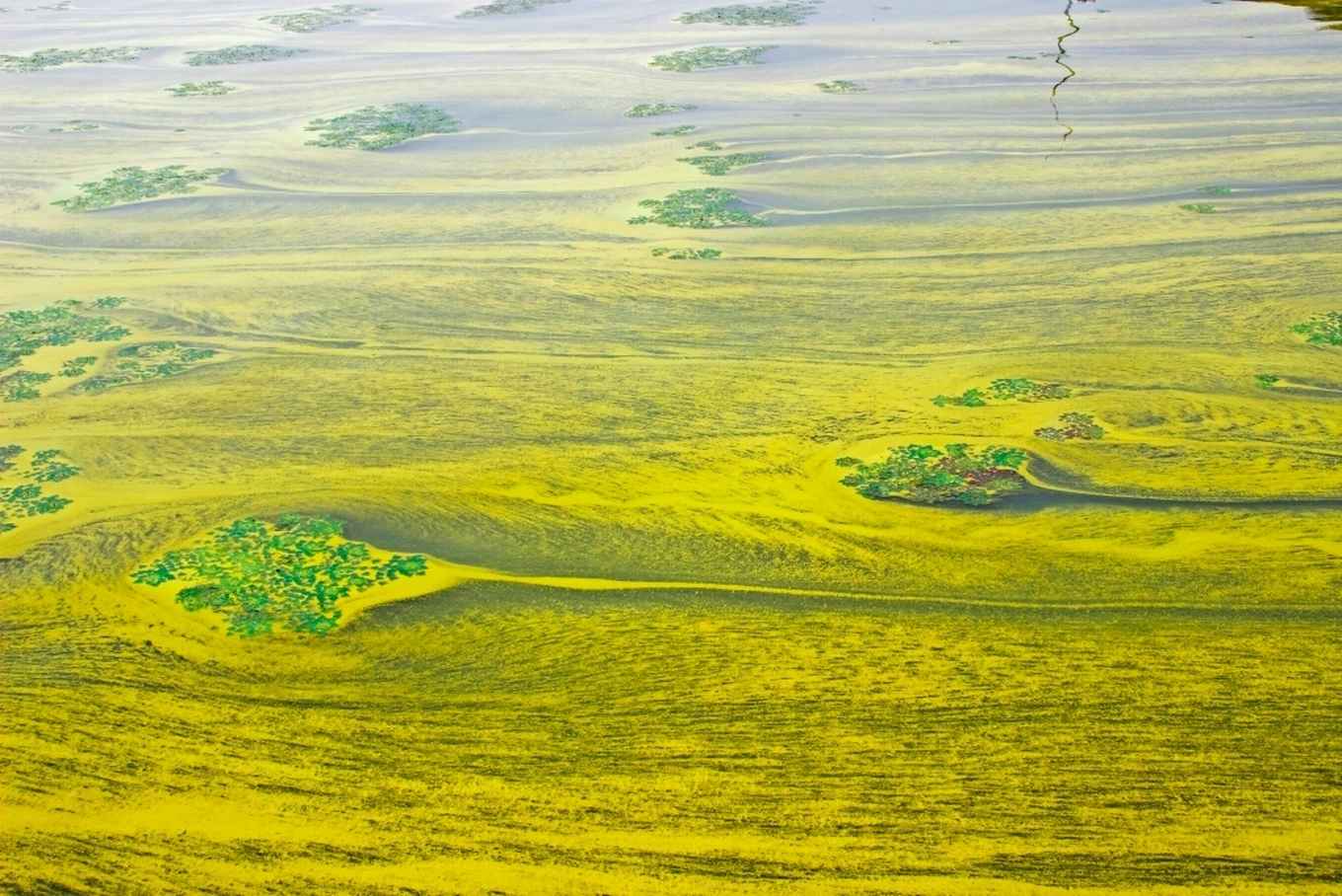Cyanobacteria beat green algae at elevated CO2
11 September 2017

Bloom-forming cyanobacteria can cause major problems in water quality management. For instance, cyanobacterial blooms produced a major drinking water crisis in Lake Taihu (China), where 5 million people were without tap water for more than 10 days in 2007. Similarly, half a million people were without tap water in the city of Toledo (USA) in 2014, because of a cyanobacterial bloom in Lake Erie. How these blooms will respond to the current rise in atmospheric CO2 levels is therefore a major concern.
Toxic blooms
Cyanobacteria have very effective mechanisms to concentrate CO2 in their cells. Hence, the common expectation is that cyanobacteria particularly dominate in waters with low CO2 concentrations, whereas eukaryotic phytoplankton species such as green algae will benefit from rising CO2 levels. Xing (Jason) Ji, Jolanda Verspagen, Maayke Stomp and Jef Huisman developed a mathematical model and performed a series of competition experiments to test these ideas.
The researchers found just the opposite of what you would expect. Their results demonstrate that green algae can be very strong competitors under CO2-depleted conditions, whereas the competitive ability of cyanobacterial strains with high-flux bicarbonate uptake systems increases at elevated CO2 levels. These new findings indicate that bloom-forming cyanobacteria such as Microcystis, which forms toxic blooms in many eutrophic lakes, can adapt their strain composition to benefit from the current increase in atmospheric CO2 levels.
Publication
Their new publication is published in a special issue on carbon-concentrating mechanisms in the Journal of Experimental Botany (volume 68, issue 14), is highlighted in an accompanying insight article, and features on the front cover of the journal with a photo taken by Xing Ji of a dense Microcystis bloom in Lake Taihu, China.
Publication details:
Ji X, Verspagen JMH, Stomp M & Huisman J. 2017. Competition between cyanobacteria and green algae at low versus elevated CO2: who will win, and why? Journal of Experimental Botany 68 (14): 3815-3828.